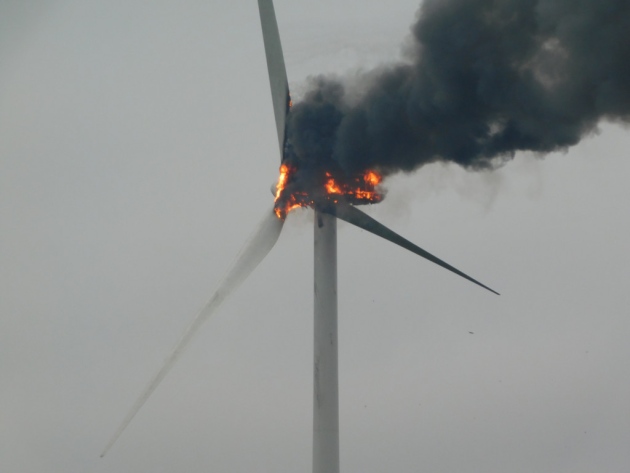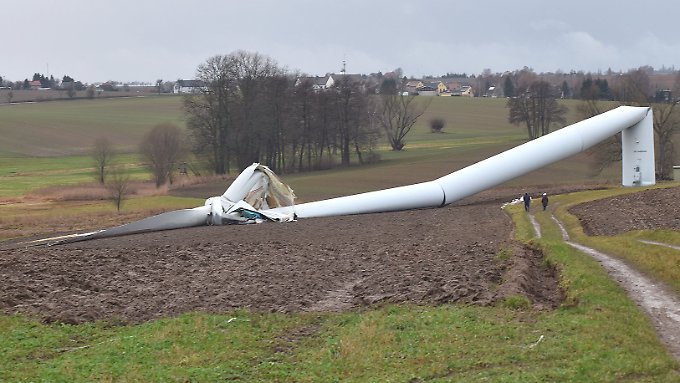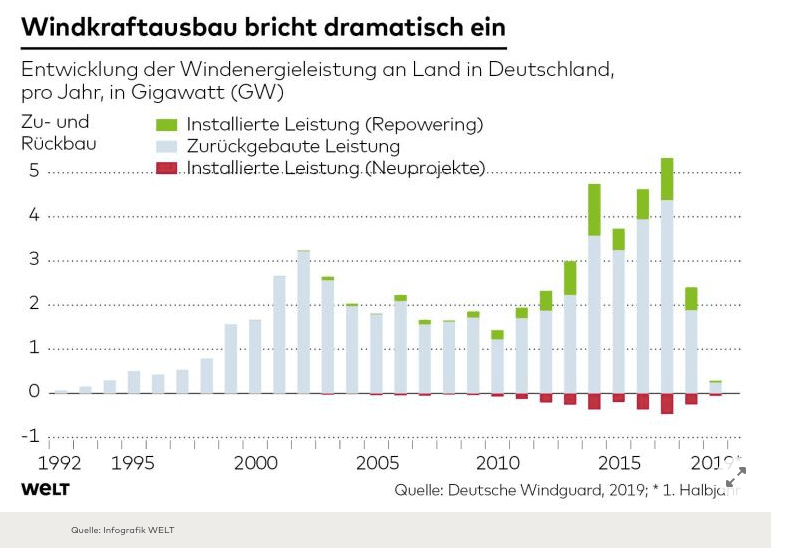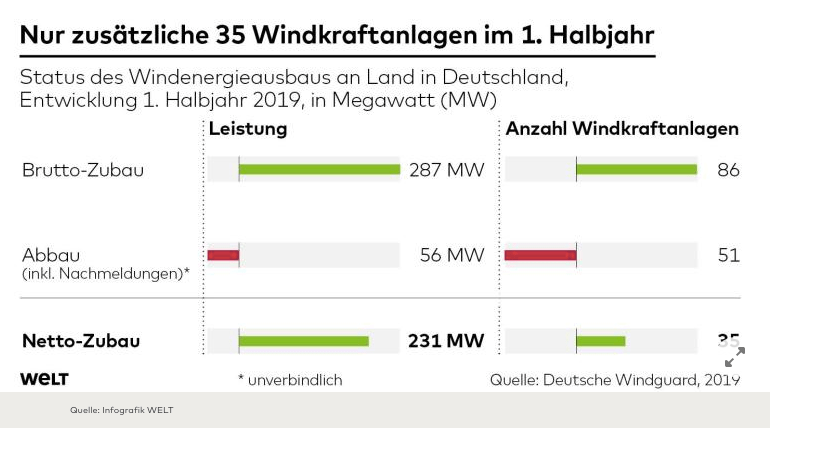Not long ago, Germany led the charge on wind power, now its wind industry faces Armageddon. Subsidies have been cut. Market rules against intermittent sources have been tightened. Germany’s rural residents are on the brink of revolt, fed up with their bucolic landscapes being trashed and being forced to live with practically incessant turbine generated low-frequency noise and infrasound. And a fair proportion of those neighbours forced to suffer these things are pursuing legal remedies against those ready to torment them.
All in all, it’s a perfect storm, with thousands of MWs worth of projects at a standstill and the hopes of eager developers left in tatters.
Needless to say, the rent-seekers that populate Germany’s wind industry are apoplectic.
German daily Die Welt reports on the desperate state of fear and self-loathing that’s struck amongst a group who thought that their sunny days would never end.
Collapse of Wind Power Threatens Germany’s Green Energy Transition
Die Welt
Daniel Wetzel (translation by GWPF)
26 July 2019
Hardly any new wind turbines were built in Germany in the first half of the year. Turbine makers call it a “punch in the gut of the green energy transition” and blame environmentalists.
The expansion of wind power in the first half of this year collapsed to its lowest level since the introduction of the Renewable Energy Act (EEG) in 2000. All in all, just 35 wind turbines were built with an output of 231 megawatts. “This corresponds to a decline of 82 percent compared to the already weak period of the previous year”, according to the German Wind Energy Association (BWE) in Berlin.
“This makes one nearly speechless,” said Matthias Zelinger at the presentation of the data. The managing director of the Power Systems division of the German Engineering Federation (VDMA) spoke of a “blow to the guts of the energy turnaround”. This actual development doesn’t match “at all to the current climate protection debate”.
“On the one hand the Federal Government speaks of its achievement of ambitious renewable expansion and climate protection goals for the years 2030 and 2050. On the other hand, the perspective is missing,” said Hermann Albers, President of the German Wind Energy Association (BWE): “The discrepancy between claim and reality is growing.”
The federal government wants to increase the share of renewable energy in the electricity supply from around 40 today to at least 65 percent in 2030. But in 2021, when thousands of wind turbines come to the end of the 20-year subsidy period of the Renewable Energy Act, more wind turbines will be demolished than new ones added, the wind industry fears. The government’s green energy and probably also its climate targets would fail.
The reasons for the slump in new construction figures are manifold. Unlike in the past too low subsidies for wind power is not the cause this time. “It’s not about the money,” said Albers: “The energy transition is being slowed down on a grand scale.”
The most important cause lies in the legal resistance of wildlife and forest conservationists fighting new wind farms.
The BWE President referred to an industry survey of the onshore wind agency. According to its findings, more than 70 percent of the legal objections are based on species conservation, especially the threat to endangered bird species and bats.
Wind power president Albers called many complaints unfounded. He claims that the population of the red kite raptors has actually increased in parallel with the expansion of wind power. However, the nature conservation federation of Germany rejected that claim when asked by Die Welt.
In addition to species protection, it is primarily conflicts over turbine noise that have resulted in legal objections against wind power projects. They are responsible for 17 per cent of legal cases. Monument protection are behind six percent of lawsuits.
By introducing a market-based tendering model, the federal government forced the wind power industry to cut costs and make cut-throat calculations.
On top of the growing economic risk comes now the risk of legal action.
Both together scare off more and more potential investors. Since the federal government also removed some problematic privileges for so-called community wind farms, there are no longer enough participants for the public auction rounds. Of the more than 1350 megawatts of wind power projects tendered this year, only 746 megawatts could be slated for a project.
Ever since local resident protests in many state parliaments have led to critical discussions about a minimum distance to residential development, the licensing authorities are much more cautious than before, the wind power lobby complains. According to BWE figures, 11,000 megawatts of wind energy capacity are currently stuck in the permit backlog.
“Military concerns and FM radio beacons also constituted significant approval barriers”.
Altogether 4790 megawatts of wind power are blocked here, of which alone 2370 megawatts are blocked by the distance control. Wind power projects would have to keep a distance of 10 to 15 kilometers in Germany to the stations that are used for navigation in aviation, Albers claimed: Some neighboring states were content with half this distance.
Die Welt and GWPF





Sadly, now the companies pursue Norway and build even larger turbines in untouched wilderness. This must stop! Loss of wilderness is a crime! This is not green, 7000 tons of concrete, steel and composites are not having a positive CO2 contrubution in the lifetime of the wind turbine! And miles and miles of roads are built in the wilderness. Stop now! Think! This is just greed, not green at all..
The germans have almost come to a stop in building these thing at home. They are now bombarding the entire norwegian coastline in the name of ‘the green change’. And the norwegian government aplaude it and let the people pay by increasing el-line taxes. They made several giant cables to Germany, because everything will go to export. We are self sufficient with water power. But people are waking up now, especially when they see what kind of monsters they are building. Nature, birds, animals and people suffer, while foreign investors cashed in 400 billion NOK, thats 40 billion euros, earlier this year. We want to stop them, but we need help.
Reblogged this on Climate- Science.
Reblogged this on ajmarciniak.